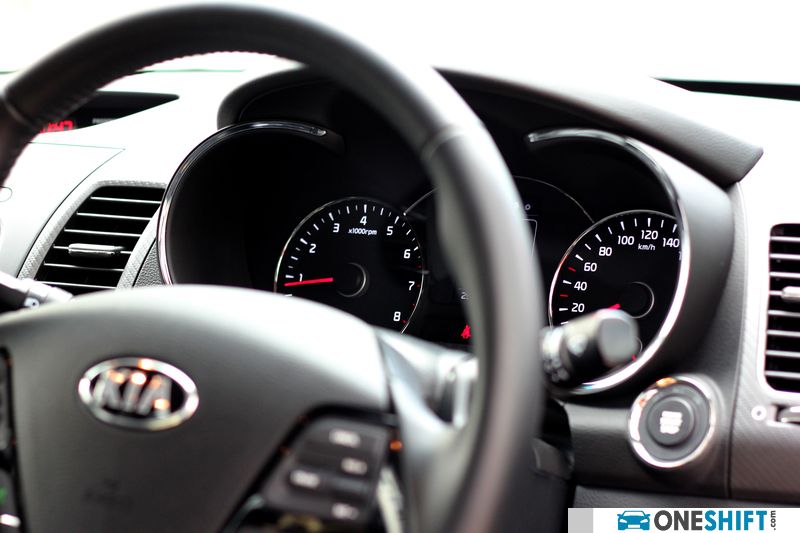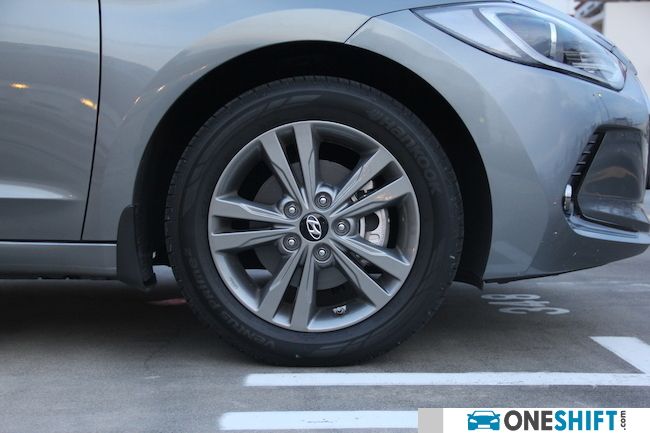Sibling Rivalry - The Hyundai Elantra Elite vs the Kia Forte K3 SX
Many of us have gone back and forth comparing compact sedans from different makes. The amount of added scrutiny when it comes to cars which are related is more evident, especially trying to find out what the differences are in specifications and equipment levels.


Many of us have gone back and forth comparing compact sedans from different makes. The amount of added scrutiny when it comes to cars which are related is more evident, especially trying to find out what the differences are in specifications and equipment levels.


The Hyundai Elantra and Kia Forte K3 are two sensible compact sedans (some of you may not know this, but oth cars are built by the same parent company). Heavy on equipment levels, and their sights targeted at their Japanese counterparts, their offerings are worth heavy consideration if you are looking for something for your daily commute.
We first look at where it really matters, the interiors. The Hyundai Elantra and the Kia Forte K3 both sit on the same platform, with a wheelbase of 2,700mm, which is the same as the Toyota Corolla. While the wheelbase may be the same as their Japanese-branded counterpart, rear leg space for both the Kia (913mm) and Hyundai (907mm) fall a little shorter than the Corolla (1052mm). However, rear legroom for both cars are more than sufficient to carry adults in the rear. Front legroom for the Elantra and K3 is identical to the Toyota Corolla Altis at 1073mm. With seats that are not only comfortable to accommodate larger frames for long journeys, but both cars offer built-in air conditioning for both front driver and passenger seats. Both cars feature driver’s side electric with memory for 2 positions.


Dual-Zone Climate Control is standard for both cars, and also features rear air conditioning. Rear seats are 60/40 split & fold units. Although they do fold down near flat, they leave a bump that is about 2 inches higher than the boot floor; hence you will not have a flat loading area. Both cars also feature the smart trunk function, which automatically open the boot lid, if you were to stand near the boot for a few seconds. This is really a boon to those who may need to gain access while carrying heavy shopping, or even that difficult-to-put-down kid.


Dash design for both cars are very different, the Elantra has gone the direction of a more serious-upright looking dash with plenty of frosted silver and matt black plastic. Fit and finish are actually almost comparable to what you might find in something Japanese. The K3 on the other hand opted to have a sporty looking one with a carbon-fibre patterned surface, though visually it might look like Kia has done a little more sculpting here, with more curves and rounded shapes, but comes across as tacky. The Elantra dash wins it in terms of overall quality.
Although there are slight differences in appearance with the touchscreen display for both cars, both in-dash touchscreen displays are easy to read, and provide controls for Audio system with MP3, AUX, iPod, iPhone and USB connectivity.
While both cars may carry a very similar silhouette, with an identical roofline, the Kia carries more beefy lines, and their trademark “Tiger Nose”, while the Elantra sports a hexagonal grill with more aggressive treatment to the front headlamps, featuring C-shaped daytime running lights.
The rear of both cars may look similar at first glance, but with the Hyundai featuring sharper features at the bumper, while the Kia carries more bulbous rear tail lamps. Wing mirrors for both cars come with indicator repeaters, the Elantra comes standard with blind spot warning indicators as standard. The K3 on the other hand offers them as optional extras.


Driving the cars, they both generally handle the same, though you will find that the Kia feels a little more alive. The century sprint timing is 12.1 seconds, a little slower than the Elantra's 11.1 seconds, the Kia is 1293kg, a full 43kg heavier than the Elantra. Sharing the same engine, the K3 pushes 3 more bhp and 2Nm more torque which helps compensate for the difference in weight. Both cars are however, not built for performance and their power plants would come across as rather tired.
Handling-wise, both cars have been set for comfort. Although they do hold corners respectfully, there is plenty of bounce coming from both cars, which can get rather unsettling if you are taking a series of tight corners, as we discovered.
Brakes are ABS-equipped 4-wheel disks which are identical in behaviour on both makes. Light braking would offer some decent bite to slow the car down. But brakes come across as spongy. They may do the job, but this will require you to give a lot more travel in order for them to bite hard. This can prove unsettling at times, especially if the car in-front of you brakes really hard.


While both cars come with Economy, Normal and Sports drive modes, the Kia also comes equipped with paddle shifters, which after some time driving both cars, you’d realise that Sport mode holds the gears too long when you’re not gunning the car, and you’re best left in Normal mode. The Kia’s paddle shifters offer the advantage, as you are able to drop a cog or 2 very easily before entering a corner, without taking your hands off the steering, while the gearbox switches to “Manual” mode momentarily, and then switching back to “Automatic” after.
Wheels-wise, the Elantra comes equipped with a 16” setup while the Kia gets sportier 17” units, which attributes to the slightly better handling of the latter.


While both cars are very similar, which one is the better of the two? The Kia we tested was the more expensive SX model which goes for $101,999 (19 September 2016), while the Elantra tested was also the more expensive GLS Elite model, at $107,999. While the more costly Elantra does feature 6-airbags, and the K3 offers just 2, the $6,000 difference, and the slightly better handling, coupled with the overriding gearshift pedals (to counter the not-so-great Sports Mode) behind the steering wheel makes the Kia our choice. As for someone who may come from a safety standpoint, the Elantra would be the better buy, due to the 6 airbags. It is really up to where the justification lies on the buyer.
Credits:


Get the Best Price for your used car
from 500+ dealers in 24 hours

- Convenient and Hassle-Free
- Consumer Protection
Transparent Process
With No Obligation








